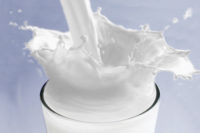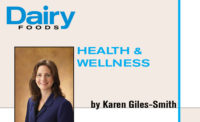Are We There Yet?
Can you imagine anyone in the New Zealand or Australia dairy sector debating the merits of pursuing exports? Do industry participants in the Netherlands or Denmark ever ponder whether globalization is here to stay? Do they distinguish their customer base between domestic and overseas?
Can you imagine anyone in the New Zealand or Australia dairy sector debating the merits of pursuing exports? Do industry participants in the Netherlands or Denmark ever ponder whether globalization is here to stay? Do they distinguish their customer base between domestic and overseas?
Of course not. To question such things would be ridiculous. Some matters are simply understood. This is the space in which we compete.
Over the last five years, the U.S. dairy sector has been trying to find its position on the global playing field. We are now the world’s third-largest dairy exporter, trailing only the 27-country European Union and New Zealand, with a 17% share of global dairy trade. We are the largest supplier of skim milk powder/nonfat dry milk, whey and lactose, and the third-leading supplier of cheese.
There’s a greater understanding that most of our incremental production growth is being sold overseas. And at last, the entire U.S. industry is beginning to accept the stakes of globalization.
This is evident in the debate swirling about improving our dairy policies. The upcoming farm bill negotiations will address aspects of our pricing regulations. Some policies (such as the support price) clearly hinder the creation of a more diverse product portfolio to meet the needs of global customers. We also see more dairy processors actively exporting.
That said, we are still growing into our new role as a global supplier, and the maturation is far from universal. For instance, the recent decision by the National Conference on Interstate Milk Shipments to retain the outdated somatic cell count threshold of 700,000 cells/milliliter hurts our global competitiveness, both by damaging customer perceptions of our quality and also increasing supply chain complications for exporters who must meet certain market standards, such as those of the EU-27.
Technical barriers to trade have proliferated. In the last year, China, Russia and Algeria – three of the world’s largest dairy importers – have thrown up thorny new certification requirements that undercut our export potential. In addition, price volatility has persisted and our use of risk management tools hasn’t really progressed, even as Oceania and Europe cut their learning curves and develop tools of their own.
And yet, the size of the prize is undeniable. According to the Food and Agricultural Policy Research Institute (FAPRI), world cross-border dairy trade is growing three times as fast as U.S. domestic consumption.
Two trends stand out for future growth: the expanding urban middle class and health and wellness. Consider: 60% of the global increase in gross domestic product over the next 15 years will come from the world’s top 600 cities, says McKinsey & Co. The baby formula sector is poised to double in size by 2015, says Euromonitor, and dairy finds itself nicely aligned with key nutritional priorities such as weight management, protein intake and healthy aging.
These trends were identified in the Globalization Study conducted in 2009 by the Innovation Center for U.S. Dairy (with support from Bain & Co.). Later this year the Innovation Center will release a refresh of Bain’s findings to see if they still hold. Among the original conclusions:
• Developing markets have continued to see strong consumption, outstripping domestic supply.
• Export supply continues to be lagging behind.
• U.S. suppliers are well-positioned, but buyer feedback affirms we must still address weaknesses in commercial practices, such as improved customer focus, in-market presence and commitment to regular deliveries with longer-term pricing arrangements.
Over the last decade, we’ve gone from exporting 5% of our production to exporting 13%, and we’ve matured along the way. But maturation is an ongoing process. I’d like to think we don’t have to answer the question of whether globalization is here to stay anymore. Instead, we need to decide what role we will play in this growing, globalized market, and we need to focus our resources on what we need to do to get there.
Tom Suber is president of the U.S. Dairy Export Council, Arlington, Va. He can be reached at tsuber@usdec.org.
Can you imagine anyone in the New Zealand or Australia dairy sector debating the merits of pursuing exports? Do industry participants in the Netherlands or Denmark ever ponder whether globalization is here to stay? Do they distinguish their customer base between domestic and overseas?
Of course not. To question such things would be ridiculous. Some matters are simply understood. This is the space in which we compete.
Over the last five years, the U.S. dairy sector has been trying to find its position on the global playing field. We are now the world’s third-largest dairy exporter, trailing only the 27-country European Union and New Zealand, with a 17% share of global dairy trade. We are the largest supplier of skim milk powder/nonfat dry milk, whey and lactose, and the third-leading supplier of cheese.
There’s a greater understanding that most of our incremental production growth is being sold overseas. And at last, the entire U.S. industry is beginning to accept the stakes of globalization.
This is evident in the debate swirling about improving our dairy policies. The upcoming farm bill negotiations will address aspects of our pricing regulations. Some policies (such as the support price) clearly hinder the creation of a more diverse product portfolio to meet the needs of global customers. We also see more dairy processors actively exporting.
That said, we are still growing into our new role as a global supplier, and the maturation is far from universal. For instance, the recent decision by the National Conference on Interstate Milk Shipments to retain the outdated somatic cell count threshold of 700,000 cells/milliliter hurts our global competitiveness, both by damaging customer perceptions of our quality and also increasing supply chain complications for exporters who must meet certain market standards, such as those of the EU-27.
Technical barriers to trade have proliferated. In the last year, China, Russia and Algeria – three of the world’s largest dairy importers – have thrown up thorny new certification requirements that undercut our export potential. In addition, price volatility has persisted and our use of risk management tools hasn’t really progressed, even as Oceania and Europe cut their learning curves and develop tools of their own.
And yet, the size of the prize is undeniable. According to the Food and Agricultural Policy Research Institute (FAPRI), world cross-border dairy trade is growing three times as fast as U.S. domestic consumption.
Two trends stand out for future growth: the expanding urban middle class and health and wellness. Consider: 60% of the global increase in gross domestic product over the next 15 years will come from the world’s top 600 cities, says McKinsey & Co. The baby formula sector is poised to double in size by 2015, says Euromonitor, and dairy finds itself nicely aligned with key nutritional priorities such as weight management, protein intake and healthy aging.
These trends were identified in the Globalization Study conducted in 2009 by the Innovation Center for U.S. Dairy (with support from Bain & Co.). Later this year the Innovation Center will release a refresh of Bain’s findings to see if they still hold. Among the original conclusions:
• Developing markets have continued to see strong consumption, outstripping domestic supply.
• Export supply continues to be lagging behind.
• U.S. suppliers are well-positioned, but buyer feedback affirms we must still address weaknesses in commercial practices, such as improved customer focus, in-market presence and commitment to regular deliveries with longer-term pricing arrangements.
Over the last decade, we’ve gone from exporting 5% of our production to exporting 13%, and we’ve matured along the way. But maturation is an ongoing process. I’d like to think we don’t have to answer the question of whether globalization is here to stay anymore. Instead, we need to decide what role we will play in this growing, globalized market, and we need to focus our resources on what we need to do to get there.
Tom Suber is president of the U.S. Dairy Export Council, Arlington, Va. He can be reached at tsuber@usdec.org.
Looking for a reprint of this article?
From high-res PDFs to custom plaques, order your copy today!





